In the country the consumption of dried fruit is growing. In the first months of last year it increased by as much as 11,9% (Nielsen data).
Among the varieties with the shell preferred by the villagers there are peanuts, hazelnuts, almonds and walnuts, while among those "without" they excel raisins, prunes and dried figs. Sales of products that have recently arrived on the market are also growing. Like the Goji berries, of which the villagers are the first consumers in Europe.
The reason for the success? "I'm a concentrate of antioxidants, vitamins and minerals»Explains the doctor , a nutrition biologist in Brindisi, who together with Dr. , nutritionist biologist and expert in food science and technology in the province of Bologna and Ravenna, guides us to discover their benefits.
Respect these doses
«Dried fruit has a important caloric intake: the shell one, in particular, can exceed 600 calories per 100 grams because it is rich in good fats, while the other varieties are between the 200 and the 300, because they mainly supply sugars, of which it is however good not to abuse. In order to enjoy its virtues, therefore, remember that the recommended daily dose is 30 grams for nuts and 40 for the dried or dehydrated one (including berries) », says Dr. .
And don't be afraid to find yourself arguing with the scales. If consumed in moderation, dried fruit does not make you fat. On the contrary, eaten regularly helps to control the extra pounds.
This is demonstrated by a research by the Loma Linda University School of Public Health (USA) and by the International Agency for Research on Cancer (based in France), published in the European Journal of Nutrition: include in the diet walnuts, almonds, hazelnuts, pistachios and peanuts, with its high satiating power, it can decrease the risk of overweight and obesity.
«The credit is both fat and fiber, which slow down stomach emptying and sugar absorption, helping to keep blood sugar in check and prolonging the sense of satiety»Explains the nutritionist biologist. But there's more: taking nuts regularly has beneficial effects also on the cardiovascular system.
The confirmation comes from a research carried out by the US Harvard TH Chan School of Public Health, published in the Journal of the American College of Cardiology. Nuts provide unsaturated fats such as oleic and linoleic, which regulate the levels of cholesterol in the blood, minerals such as potassium and magnesium, precious for circulation, and ahigh percentage of antioxidants such as flavonoids, which keep the heart and arteries healthy by reducing the risk of stroke and heart attack ”, points out Dr. .
Prefer it organic and from the country
Most of the dried and dried fruit that ends up on our tables comes from other countries. According to the Inc (International Nut and Dried Fruit Council Foundation, which brings together over 700 operators in the sector all over the world) among the most imported varieties in the country are hazelnuts, almonds and raisins.
But foreign products they do not guarantee controls on the entire supply chain, from the field to the point of sale. This then is the advice of : «Much better to buy that coming from our crops, possibly biological, safer also from the point of view of fungal contamination. Almonds, walnuts, hazelnuts and the paesene they are produced without being irrigated and the reduced humidity therefore makes them less attackable by microorganisms. And if there is no "local" fruit, it is good to prefer the one still with the shell and always packaged, difficult to attack by mold and bacteria. It is also a good habit to always make sure that it is intact ».
THEintegrity is synonymous with quality even in the case of dried or dehydrated varieties. "Before buying them, observe them carefully: the fruits (or berries) must be whole, not opaque, soft and darker in color than the fresh equivalent », suggests Dr. .
Which then gives these indications on the label: «In the list of ingredients sulfur dioxide or sulfur dioxide must not appear (code E220), a gas used as a disinfectant, whitener and food preservative to maintain the original color and flavor of the product and increase its shelf life. Then pay attention to presence of added sugars, saccharin or other artificial sweeteners, used to enhance the taste: they are all harmful to health ».
Finally, as far as berries from abroad are concerned, check that the wording "preserved in a controlled atmosphere". «It is a guarantee of protection from humidity and from alterations due to the attack of microorganisms», concludes .
Better peeled or with the "peel"?
“The brown skin that lines almonds, walnuts and other dried fruit varieties contains a pool of antioxidants, useful for preventing cellular aging, and many fibers, precious for the intestine », says nutritionist .
That's why it would be better always choose it with the "peel" (and possibly also with the shell). "The latter, although it is less practical to consume, in fact gives you a great advantage: keeps essential fatty acids intact, in particular Omega 3 and Omega 6, of which it is very rich, which tend to deteriorate with exposure to light and air », concludes our expert.
To try: local myrtle and blueberry berries
They grow spontaneously in mountain areas: the myrtle berries are widespread above all in Sardinia, those of Blackberry in the areas of the Alps and the northern Apennines.
Similar in appearance, they belong to two different plant families: the myrtle to that of the Mirtaceae, the blueberries to that of the Ericaceae. Both varieties however, they are super antioxidants: provide vitamin C, anthocyanins and other anti-aging substances that protect cells and tissues from the damaging action of free radicals.
More they tone the capillaries, improve the microcirculation, protect the health of the heart and arteries. On the market you can find them dried, ready to be enjoyed alone or added to yogurt and fruit salads or for be used in the kitchen: try them, for example, to give an extra touch to fish or meat dishes.
To discover the properties of dried fruitinstead, browse the gallery!
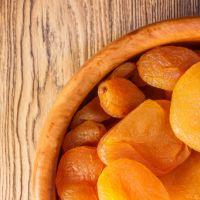
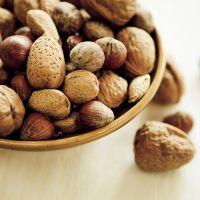
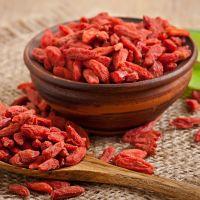

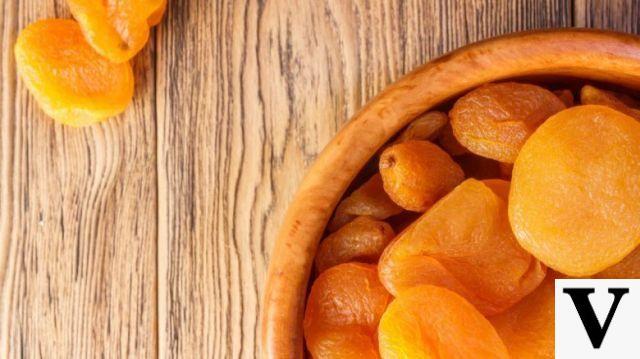
More minerals & fibers
Mele
Why eat them: they are an excellent remineralizer. They provide a good amount of iron, calcium and potassium. In addition, they keep the immune system efficient thanks to their content of vitamins C (antioxidant), B1 (energizing) and B2 (with anti-inflammatory action).
The extra tip: enjoy 7-8 slices a day as a snack. They contain soluble fibers that slow down the emptying of the stomach and avoid the fluctuations in blood sugar, which cause hunger attacks.
apricots
Why eat them: they are a good source of beta-carotene, a precursor of vitamin A, which has an antioxidant effect. This substance, in addition to defending the skin from the aggression of free radicals, preventing the formation of wrinkles, protects the walls of blood vessels, reducing the risk of developing cardiovascular disease. Dried apricots also provide you with a good dose of calcium, which is useful for bone health.
The extra tip: use them to sweeten fresh fruit and yogurt smoothies.
Plums
Why eat them: they have a higher laxative power than fresh plums. The fibers they are rich in, being more concentrated, stimulate the work of the intestine more. Their purifying action is enhanced by the presence of potassium, a mineral with diuretic properties. Furthermore, they have a high antioxidant power because new compounds are formed during drying, in particular polyphenols.
The extra tip: if you suffer from constipation, eat them cooked. The water they absorb makes them even more effective.
banana
Why eat them: they are an excellent snack to recover energy in moments of greater physical and mental stress. They provide in particular potassium and magnesium, which improve the functioning of muscles and nerves and counteract overexertion and tiredness.
The extra tip: to combat stress, consume them with a glass of milk (it contains tryptophan and calcium with a relaxing action) or with 3-4 walnut kernels, sources of good Omega 3 fats, friends of the brain.
Uvette
Why eat them: they contain a high percentage of polyphenols, which fight the aging of all cells, potassium, essential for regulating blood pressure, and fiber, which help reduce the absorption of cholesterol.
The extra tip: if you feel down, add 2 tablespoons to a fruit salad to eat as soon as you wake up. They provide sugars essential for the proper functioning of the brain and do not cause blood sugar to spike.
Dates
Why eat them: they are a good source of vitamins B2, B3, B6, all involved in metabolism, that is, in the transformation of what we eat into energy for the body. They also contain calcium and vitamin D, which are essential for healthy bones and teeth. Thanks to the presence of magnesium and potassium, they also guarantee the proper functioning of the nerves and muscles.
The extra tip: for breakfast, combine them with yogurt and cereals, to combat constipation and rebalance the bacterial flora.
figs
Why eat them: they are one of the richest foods in calcium, a mineral that is good not only for bones, but also for the nervous system (it has an anti-stress action) and muscles (it intervenes in the regulation of contractions). In addition, they ensure good doses of potassium, which serves to regulate blood pressure, and insoluble fibers, which stimulate the proper functioning of the intestine.
The extra tip: to keep their qualities intact, keep them in a cool and dry place, away from light.
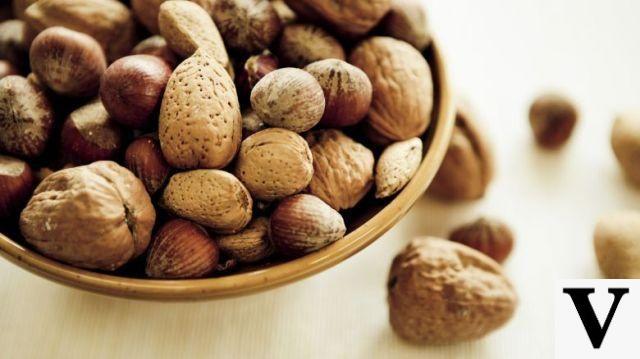
More good fats & vitamin E
Peanuts
Why eat them: American peanuts are an unexpected source of protein, essential for building muscles, antibodies, red blood cells. If you take them together with grains and legumes, you make sure you have all the amino acids your body needs.
The extra tip: consumed after physical activity, they have an extraordinary remineralizing action. Prefer shelled ones, which contain less sodium, which is harmful to your figure and health.
Cashews
Why eat them: they are a mine of vitamin E and polyphenols, powerful antioxidants that protect cells and tissues from the harmful action of free radicals, responsible for aging. In addition, they are an excellent source of potassium and magnesium, involved in many body functions, from cardiovascular to immune.
The extra tip: choose them plain, not roasted and unsalted, and keep them in the fridge. The polyunsaturated fats of which they are particularly rich in fact oxidize easily if exposed to air, light and heat.
Hazelnuts
Why eat them: they are excellent allies for the heart and circulation. The mix of fats, magnesium and fiber, of which they are an excellent source, helps prevent cardiovascular disease by reducing bad cholesterol (Ldl) and increasing good cholesterol (Hdl).
The extra tip: for breakfast, combine 7-8 hazelnuts with a yogurt. In addition to recharging your energy, you will get your fill of pre and probiotics, which promote the function of the intestine and, at the same time, help strengthen the immune system.
Pine nuts
Why eat them: They help keep appetite under control. The polyunsaturated fatty acids of which they are a source release high amounts of cholecystokinin, a hormone that suppresses the sense of hunger. In addition, they provide excellent amounts of fiber, which help keep blood sugar levels in check, preventing the risk of hunger pangs.
The extra tip: add a couple of teaspoons to pasta dishes with vegetables to make them more filling and improve their nutritional profile.
almonds
Why eat them: they are good for the mood. In fact, they supply magnesium, which is essential for the functioning of the nervous system, in particular serotonin, our wellness hormone. And they are also a source of vitamin E, which prevents the oxidation of fatty acids contained in the membranes of neurons, thus keeping them young and elastic.
The extra tip: to overcome moments of sadness and nervousness, consume a handful as a mid-morning or mid-afternoon snack.
walnuts
Why eat them: they provide polyunsaturated fatty acids, Omega 3s, which keep blood vessel walls elastic and lower bad cholesterol (LDL). They are therefore ideal for protecting the heart and arteries.
The extra tip: if you don't like fish (a privileged source of Omega 3) eat 3-4 every day. You can add them to fresh vegetable salads, breakfast cereal flakes, basil or rocket pesto.
Pistachios
Why eat them: they are one of the nuts richest in iron, an essential mineral for bringing oxygen to cells. Eat them if you get tired easily. In addition, they are an excellent hunger-breaking snack, because they contain vitamin B6, which between meals promotes the release of glucose (stored in the liver as reserve energy).
The extra tip: to increase the intake of tryptophan (of which they are rich) combine them with a plate of whole grains. You will help the brain release serotonin, the feel-good hormone.
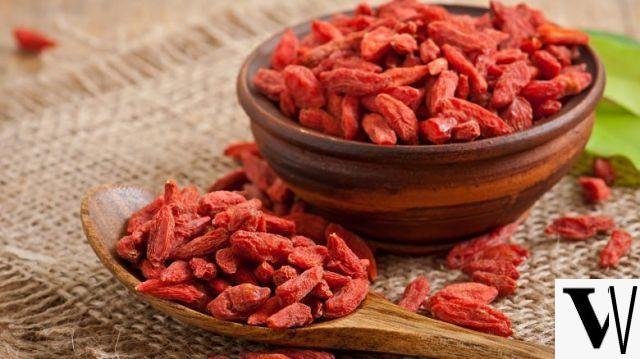
More anti-oxidants
Aronia berries
Why eat them: very similar in appearance to blueberries, they ensure many antioxidants, in particular anthocyanins, and provide a good percentage of vitamin K and minerals, such as calcium, precious for maintaining healthy bones and joints.
The extra tip: eat them to protect your gut health. Several studies have shown that regular consumption of these berries helps prevent colon cancer.
Goji berries
Why eat them: they are very rich in antioxidant substances, including germanium (a non-metal), vitamin C, vitamin E, beta-carotene, zinc. They are also useful for fighting anemia, because they stimulate the bone marrow to produce more red blood cells. And to protect the liver from toxic substances, such as alcohol and heavy metals (first of all mercury).
The extra tip: use them also for a decoction. Put a tablespoon in 250 ml of water, boil for a few minutes, then turn off the heat, let it rest for another 7-8 minutes, filter and drink.
Inca berries
Why eat them: they have anti-inflammatory and antioxidant properties. They contain even more substances effective against free radicals than goji berries. And three times more fiber than dried fruit. In particular, they provide pectin, which slows down gastric emptying and keeps blood sugar fluctuations at bay.
The extra tip: eat them after a plate of cereals and vegetables. You'll get even more fiber, which reduces hunger and prolongs satiety. In fact, they prevent blood sugar from rising too quickly, causing excessive insulin production which, in turn, promotes the return of appetite.
Cranberry
Why eat them: thanks to anthocyanins and carotenoids, which protect the retina from the aggression of solar radiation, they are effective in protecting the eyes and sight. They are also rich in vitamin C, which together with other substances with an antioxidant action helps to keep the skin elastic, preventing the formation of wrinkles.
The extra tip: eat a small handful as a mid-morning or mid-afternoon snack, or add them to yogurt or cereal for breakfast. They give you energy and help you regain vitality, because they also provide a good dose of magnesium and phosphorus.


























